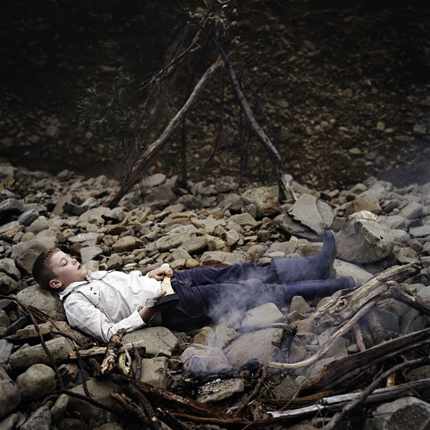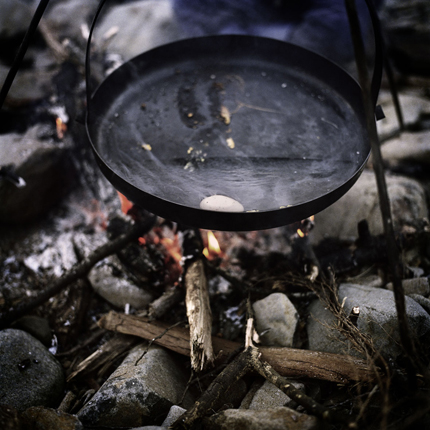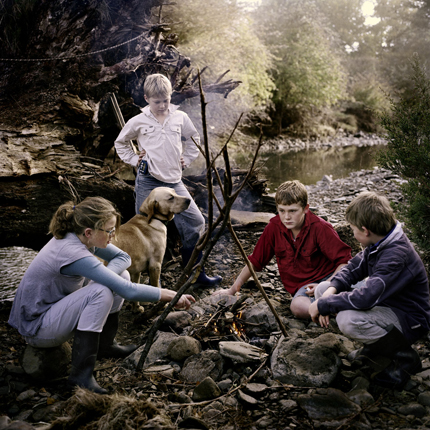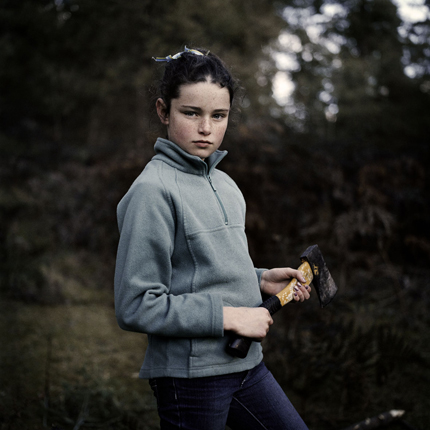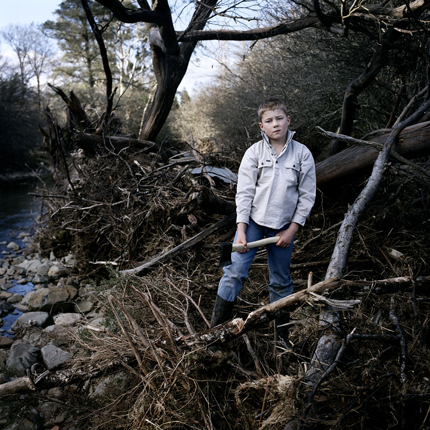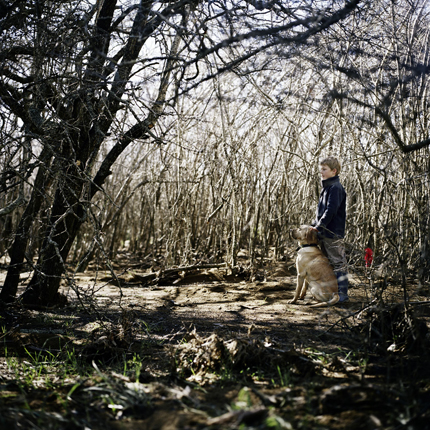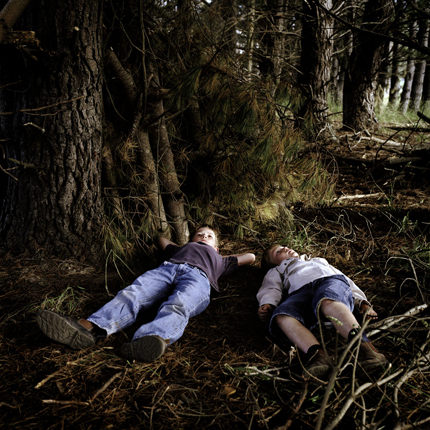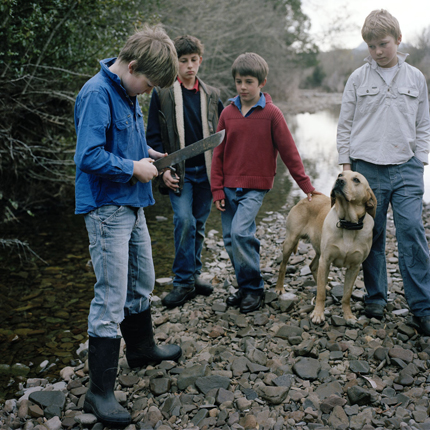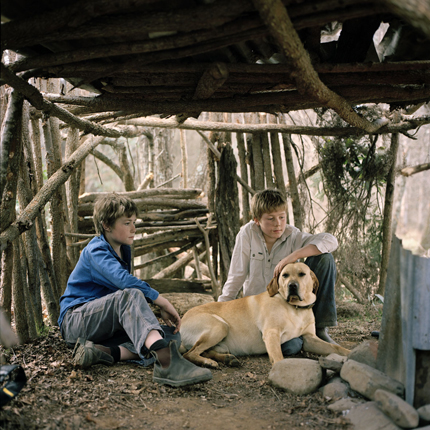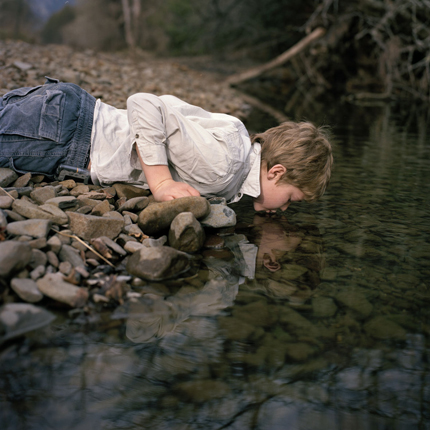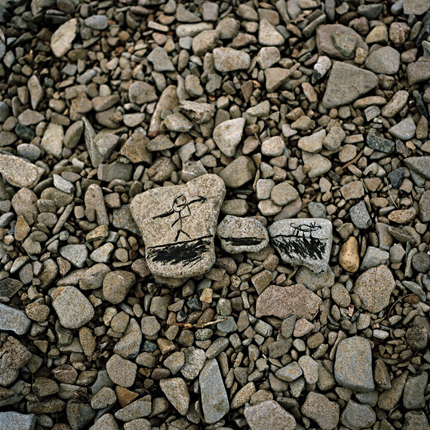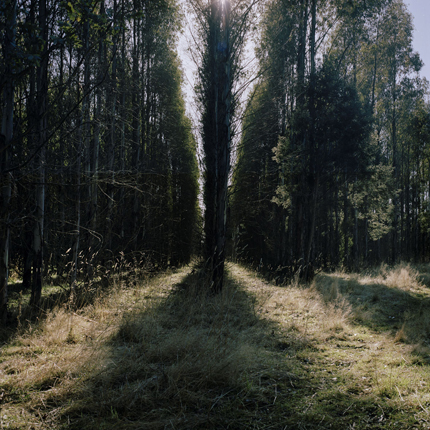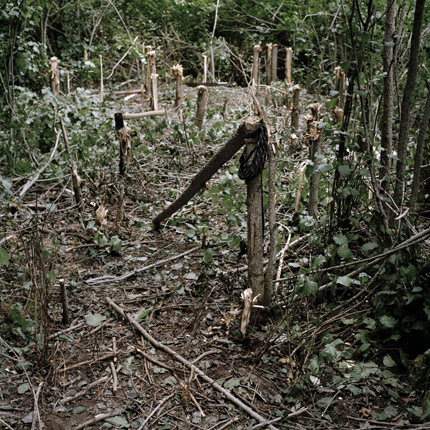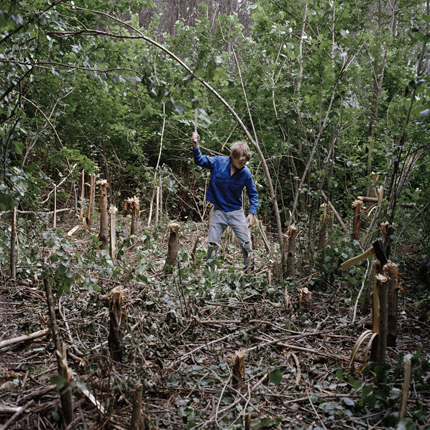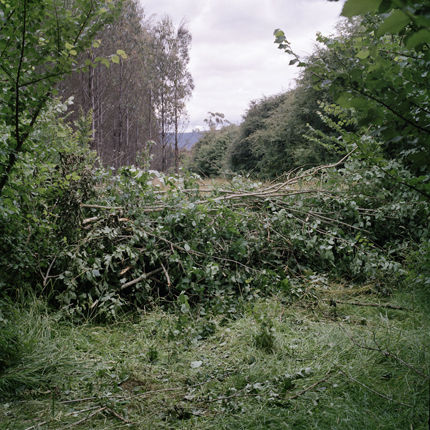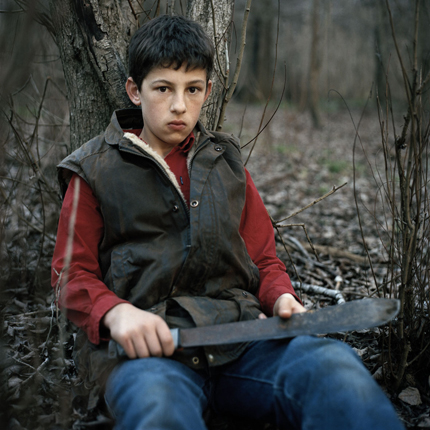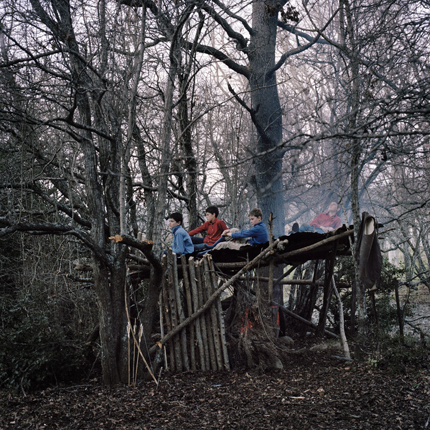It’s hard to believe that the images in Sarah Rhodes’ Play series are not staged. The slow, painterly intensity of the images invites us to imagine Sarah on the banks of the Break’O’Day River in Tasmania, an outdoor studio in which to direct her own romance of childhood through a patient band of child subjects. In fact, Sarah was brought into the very active playworlds of the children and allowed to watch. Her patient eye has produced these rich stories in a frame.
There is an otherworldly sensibility about Play – perhaps because it captures a childhood that we associate with generations before our own, and perhaps because the children are intent on maintaining the reality of their imaginary playworld.
The intensity of the children’s concentration, facing off with the camera, and the complexity of their play on the riverbanks and the woodlands beyond, belies the idea of “child’s play”. This is serious business and the children are unequivocally in charge.
However, the deepest poetry of Play may be the mirror it holds to the adult gaze. It does not necessarily (as our first adult impulse may lead us to think) give us a sneak peek into the secret world of children. The children possess both agency and power. Other than the fact that they are children, there is not much that is “childish” in these images. They are playing at being adults, playing at life. And they are playing with Sarah (and us), luxuriating in the power and freedom they have afforded themselves in this real-imaginary domain. As William Golding writes in Lord of the Flies there is “[a] kind of glamour [spreading] over them and the scene and they [are] conscious of the glamour and made happy by it.”
Sarah has inscribed her work with the themes from Lord of the Flies, entitling the images with Golding’s words of innocence (being) lost; glimpses of transcendent beauty; and a journey through fear, to the other side. As they play, the children (or should I call them small adults?) are armed to the teeth, under threat from something that they cannot see (the “Beast” in Lord of the Flies), in battle formation – guns, axes and bows and arrows bristling for action. They are obsessed with shelter and warmth, with the need to guard against the worst of nature, exhausting themselves with industry. They are preparing for the worst. But they make time to enjoy the surrounds from time to time and even allow themselves to rest, making contented peace with the contours of the landscape.
They have ritualised the spaces in which they play – red feathers mark the cubby- house the children built, and the arrows that protect it. And they govern themselves within a quiet hierarchy of age, skill and knowledge. They are out “in the real world”, doing what it takes to survive.
They have a keen sense that not everyone will make it, having shared in the loss of a loved one not long before Sarah began making the series. They are actively exploring grief and loss, and their chatter, as they busy themselves “surviving”, is often about the best of way of getting out of tight spots, and the various ways in which one could die.
This series was shot over a three-year period and continues (2008 – present). The sophistication of play developed as the children became older. They began by building cubby-houses (many of which burned down). At eight years of age, they were playing with handmade guns. By the age of ten, they were crafting bows and arrows, sharpening the arrows’ shafts with knives. And by twelve, mirroring the adult world around them, they began a logging business and began to build more substantial homes for themselves. They began to build shelters with proper foundations and footings in the cleared forest. They found a way to link their playworlds to the world beyond – to make some pocket money, they cleaned up old bottles to sell, and they trapped, skinned and tanned rabbit skins.
The children are coming to terms with their own limitations, and with the realisation that they are rapidly approaching the horizon of childhood itself as it silently gives way to adolescence and a different way of knowing. They are playing far from the gaze of their parents, armed with machetes and knives, figuring it out for themselves, preparing to step out from this enchanted world, knowingly alone and having stared death in the eye.



